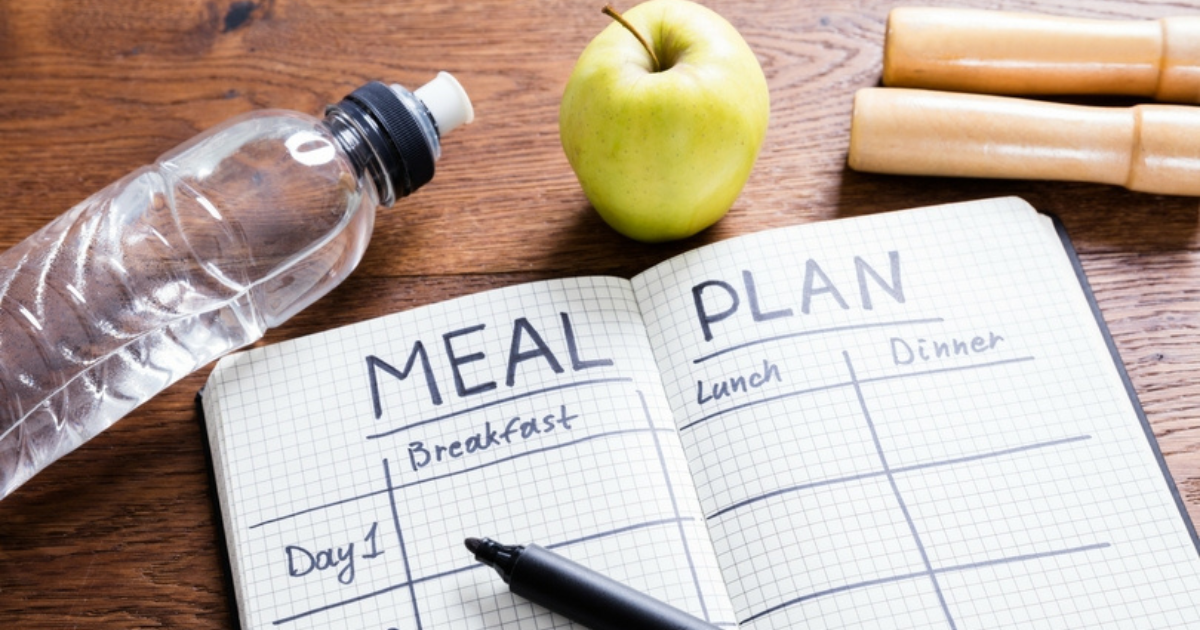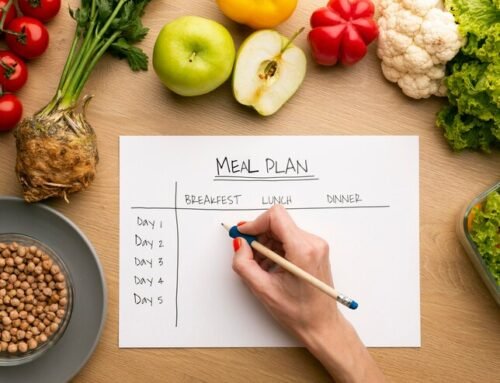The keto diet has gained immense popularity over the past few years, especially for its effectiveness in helping people lose weight quickly. But what exactly is the keto diet, and how does it work for weight loss?
In this guide, we’ll break down the keto diet meaning, its scientific foundation, how it affects your body, and how to start it correctly. Whether you’re a beginner or looking to improve your results, this article will give you a comprehensive understanding of the keto lifestyle.
What Is the Keto Diet?
The word “keto” is short for ketogenic, which refers to a diet that is high in fats, moderate in protein, and very low in carbohydrates. The goal of this diet is to change the way your body fuels itself by encouraging a metabolic state called ketosis.
Keto Diet Macronutrient Breakdown
A typical ketogenic diet consists of:
-
70-75% fat
-
20-25% protein
-
5-10% carbohydrates
By significantly reducing carbohydrate intake, your body switches from using glucose (sugar) as its primary fuel source to using fat and ketones, which are produced from fatty acids.
The Science Behind Ketosis
What Is Ketosis?
Ketosis is a natural metabolic state that occurs when your body doesn’t have enough carbohydrates to burn for energy. Instead, it turns to fat stores and converts them into ketones, which your body can use as an alternative fuel source.
How Ketosis Helps with Weight Loss
-
Burns stored fat: In the absence of glucose, your body uses fat reserves for energy.
-
Reduces hunger: Ketones have appetite-suppressing properties.
-
Stabilizes blood sugar: Lower carb intake means fewer spikes and crashes in energy levels.
-
Improves insulin sensitivity: This can benefit people with insulin resistance or prediabetes.
Benefits of the Keto Diet Meaning for Weight Loss
The keto diet is popular not only for quick fat loss but also for several health-related benefits. Let’s look at the primary ways keto supports weight loss:
1. Encourages Fat Burning

By cutting carbs and increasing fat intake, your body is forced to burn fat as its primary energy source. This can lead to more rapid fat loss compared to traditional diets.
2. Controls Hunger
High-fat foods are more satiating, meaning they keep you full for longer. This naturally reduces calorie intake without the need for strict portion control.
3. Reduces Cravings
The keto diet helps stabilize blood sugar and insulin levels. This reduces cravings for sugar and processed foods, which are common reasons many diets fail.
4. Improves Energy Levels
While the transition to ketosis can initially cause fatigue (often called the “keto flu”), many people report higher, more stable energy levels once they adapt.
How to Start the Keto Diet
Transitioning to a ketogenic diet requires some planning. Here are the steps to get started:
Step 1: Reduce Carbohydrate Intake
Limit your daily carbs to 20–50 grams net carbs. Net carbs are total carbohydrates minus fiber. Focus on cutting out:
-
Bread
-
Pasta
-
Rice
-
Sugar
-
Most fruits
Step 2: Increase Healthy Fat Intake
Eat fats like:
-
Avocados
-
Olive oil
-
Nuts and seeds
-
Eggs
-
Fatty fish
-
Coconut oil
These fats provide the calories your body needs and help you feel full.
Step 3: Eat Moderate Protein
Too much protein can be converted into glucose through a process called gluconeogenesis, which can prevent ketosis. Focus on moderate portions of:
-
Chicken
-
Beef
-
Pork
-
Fish
-
Tofu or tempeh
Step 4: Stay Hydrated
Ketosis causes your body to excrete more water and electrolytes. Drink plenty of water and consider adding magnesium, potassium, and sodium to maintain balance.
Step 5: Track Your Macros
Use an app or food journal to keep track of your fat, protein, and carbohydrate intake. This helps ensure you stay within the recommended ratios for ketosis.
Foods to Eat on the Keto Diet

Low-Carb Vegetables
-
Spinach
-
Broccoli
-
Kale
-
Cauliflower
-
Zucchini
Protein Sources
-
Eggs
-
Chicken
-
Fish
-
Turkey
-
Tofu
Healthy Fats
-
Avocados
-
Olive oil
-
Coconut oil
-
Nuts and seeds
-
Full-fat dairy
Beverages
-
Water
-
Herbal tea
-
Black coffee
-
Sparkling water
Foods to Avoid on the Keto Diet
-
Bread and pasta
-
Rice and grains
-
Sugary snacks
-
Soda and juice
-
Potatoes and corn
-
Beer and sweetened alcohol
-
Most fruits (bananas, grapes, apples)
Common Mistakes to Avoid
Eating Too Many Carbs
Even hidden sugars in sauces, dressings, or processed foods can kick you out of ketosis.
Not Getting Enough Fat
If you don’t eat enough fat, your body may not have the energy it needs, and you’ll feel tired or hungry.
Ignoring Electrolytes
Neglecting sodium, potassium, and magnesium can lead to muscle cramps, fatigue, and headaches.
Expecting Immediate Results
Weight loss may start quickly, especially water weight, but fat loss takes consistency and time.
What to Expect in the First Week
Day 1-3: Adapting to Low Carbs
You may feel sluggish or irritable. Your body is adjusting to the sudden drop in glucose.
Day 4-7: Entering Ketosis
You may begin to experience:
-
Increased urination
-
Mild fatigue
-
“Keto flu” symptoms (headache, brain fog)
-
Reduced appetite
These symptoms are temporary and usually fade by the end of the first week.
Long-Term Effects of the Keto Diet
While the keto diet can be effective for short-term weight loss, some people also use it for long-term health benefits. These include:
-
Improved blood sugar control
-
Reduced inflammation
-
Better mental clarity
-
Lower triglycerides and improved cholesterol levels
However, staying on a strict keto diet for the long term may not be suitable for everyone. It’s important to listen to your body and consult a healthcare professional if needed.
Tips for Staying on Track
Plan Meals Ahead

Meal prepping reduces stress and prevents impulsive eating.
Read Labels
Sugar and carbs can be hidden in many packaged foods—even those labeled “healthy.”
Find Keto Substitutes
Swap out high-carb favorites with keto alternatives like cauliflower rice, zucchini noodles, and almond flour.
Stay Motivated
Track progress not just by weight but also by how you feel, your energy levels, and how your clothes fit.
Also Read : Understanding Macronutrients: Key To A Healthy Diet
Conclusion
The keto diet is more than just a trend—it’s a scientifically backed approach to weight loss and health improvement that focuses on fat as the primary fuel source. By reducing carbs and increasing healthy fats, the body enters a state of ketosis, which encourages fat burning and stabilizes energy.
Like any lifestyle change, the keto diet comes with a learning curve. But with the right preparation, mindset, and consistency, it can be a powerful tool for achieving your weight loss goals and improving overall well-being.
Before starting any new diet, especially one that involves major changes in macronutrient intake, it’s a good idea to consult with a healthcare professional or nutritionist.
FAQs
1.What does “keto diet” mean in simple terms?
The keto diet means eating fewer carbs and more fats so your body enters ketosis, a state where it burns fat for energy instead of glucose.
2.How long does it take to enter ketosis?
Most people enter ketosis within 3 to 7 days of significantly reducing their carbohydrate intake.
3.Is the keto diet safe?
For most healthy individuals, the keto diet is safe when followed correctly. However, people with certain medical conditions should consult a doctor before starting.
4.Can I do keto if I’m vegetarian?
Yes, with careful planning. Focus on plant-based fats and protein sources like tofu, tempeh, nuts, seeds, and low-carb vegetables.
5.How much weight can I lose on keto?
Weight loss varies based on starting weight, body composition, activity level, and how strictly the diet is followed. Many people lose several pounds in the first week, mostly water weight, followed by gradual fat loss.
6.Do I have to stay on keto forever?
Not necessarily. Some people follow keto for a short period and then transition to a more balanced diet. Others use a modified low-carb approach for maintenance.








Leave A Comment